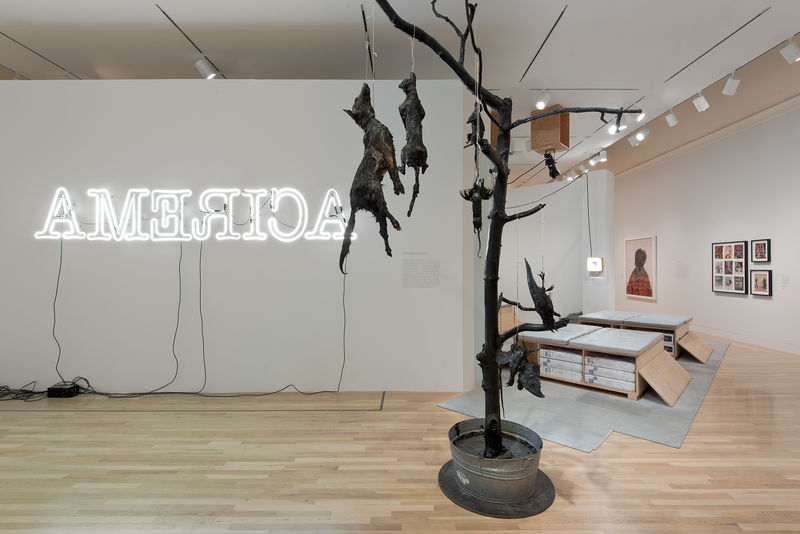
Glenn Ligon
In Glenn Ligon's Condition Report (2000), two prints hang side by side. In the left-hand print, which reproduces a 1988 painting by Ligon, the phrase "I AM A MAN" appears centrally in bold letters, black on a white background. The statement and layout echo the now-iconic signs carried by black sanitation workers in Memphis during a strike in 1968. Ligon's second print is a duplicate of the first but with additional annotations. These marks, made by an art conservator, are extensive: scratchy circles surround flaws in the original painting, and thin lines extend from these circles to notes in small, careful script. The content of these annotations seems unremarkable at first, a kind of neutral inventory dutifully carried out by an art professional. But taken within the context of Ligon's ongoing inquiry into the nuances of language, even these ostensibly objective descriptions have the potential for alternative and more pointed interpretations: "Hairline cracks; brown drips; scattered brown droplets; dark smudge—fingerprint; brown droplet; dark scrape; dark spot; loss at edge."
Because of these insistent descriptions, the surface of Condition Report starts to seem like skin—replete with signs of age and of life lived, the language suggestive of scars and wounds. Although the screen-printing technique results in a flat surface, it requires ink to be forcefully pumped through a mesh screen onto a support. This process gives the markings a physicality that they would lack had the words simply been scrawled onto the surface of the print directly, thus reinforcing the sense of a bodily imprint. Moreover, the repetition of the word brown by the conservator seems to point unintentionally to a figure—to the men who originally carried these protest signs in 1968, the color of whose skin was central to their dispossession. And the repetition of loss alludes to the fact that these figures are now absent, that the original poster and its meaning have changed. As in many of Ligon's text-based works, this linguistic shift toward embodiment is subtle, occurring through accrual and rhythm rather than overt declaration. Nonetheless, it lends a profound coherence to the work: the print's imperfect physicality feels related to the humanity and dignity of the original speech act it bears.

In these works Ligon positions himself and the viewer as observers, looking in on the cultural and political landscape of a country. This becomes more overtly the case in Rückenfigur (2009), one of a group of neon works taking up the dualities found in contemporary American society. The title is a German art historical term for a landscape painting that includes a figure seen from behind, taking in the view. These figures are often interpreted both as a surrogate for the artist and as an identificatory space for the viewer. Ligon's Rückenfigur consists of the word AMERICA spelled out in white neon, the letters turned in reverse to face the wall. Because the A, I, and M are symmetrical, it takes a moment before the reverse orientation of the word sinks in. As a result, viewers are able to read normally for a moment, happily implicated in the frame, before they realize that they are standing on the outside.
—Leora Morinis


